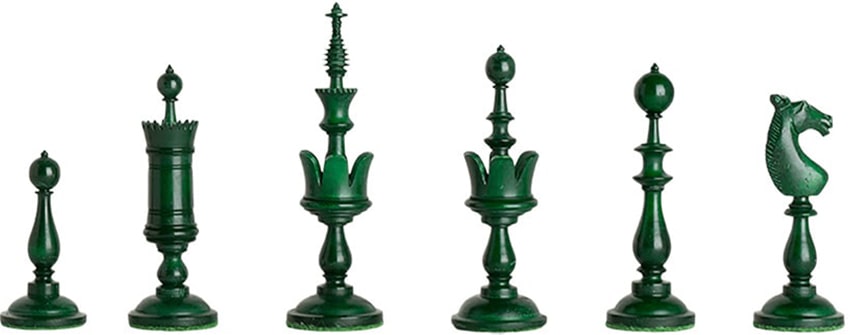Search the whole station
Selenus
The Selenus chess set, like the English Barleycorn, was often carved from bone and tended towards slender, elaborate piece designs. This style was popular in Germany and Northern Europe and was named after the author of a 17th-century chess book (Gustavus Selenus was the pen name of the Duke of Brunswick-Lüneburg). The book contained illustrations of pieces that were in use at the time, making the Selenus style one of the oldest featured in this article. The tall, elaborate pieces often featured floral motifs, with upward-pointing petals spreading from the central column. In England, the style became known as ‘Tulip Chess sets’ because of this resemblance. Selenus pieces remained popular in Germany until the early 20th century, when, like many others, they were overtaken in popularity by the sturdier Staunton pieces.
 0
0SUITS INTERNATIONAL EDUCATION
